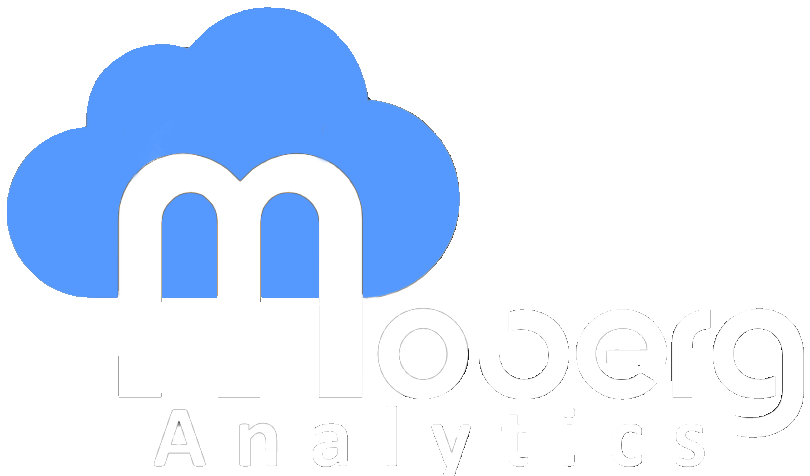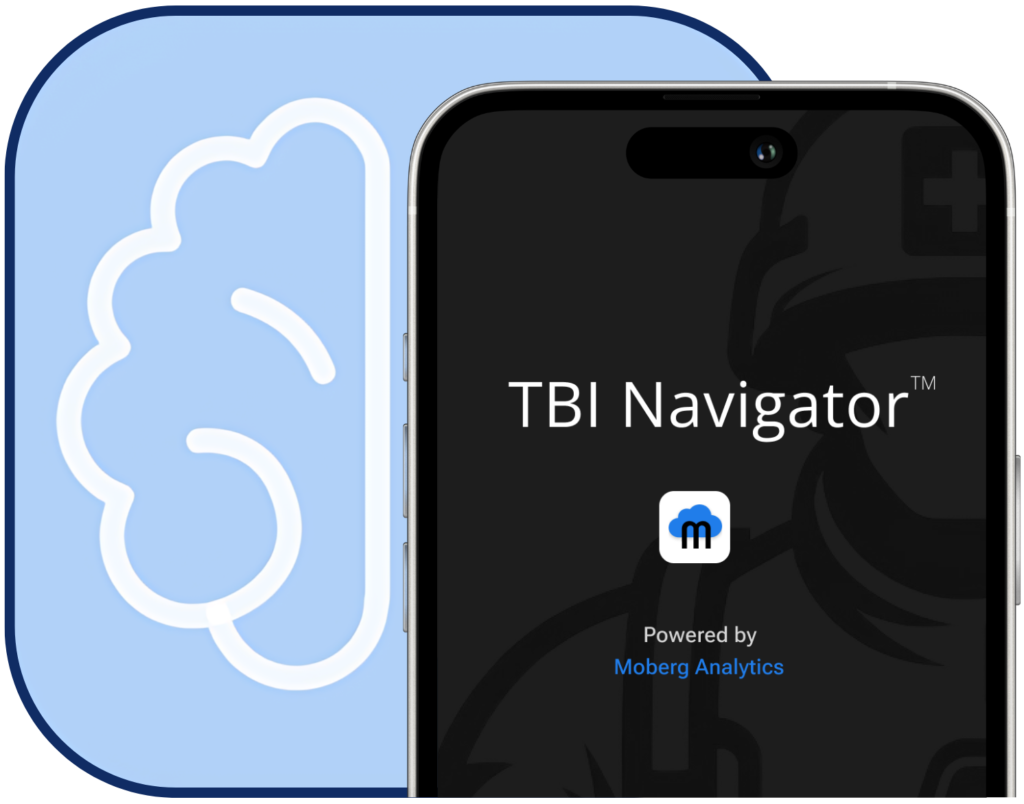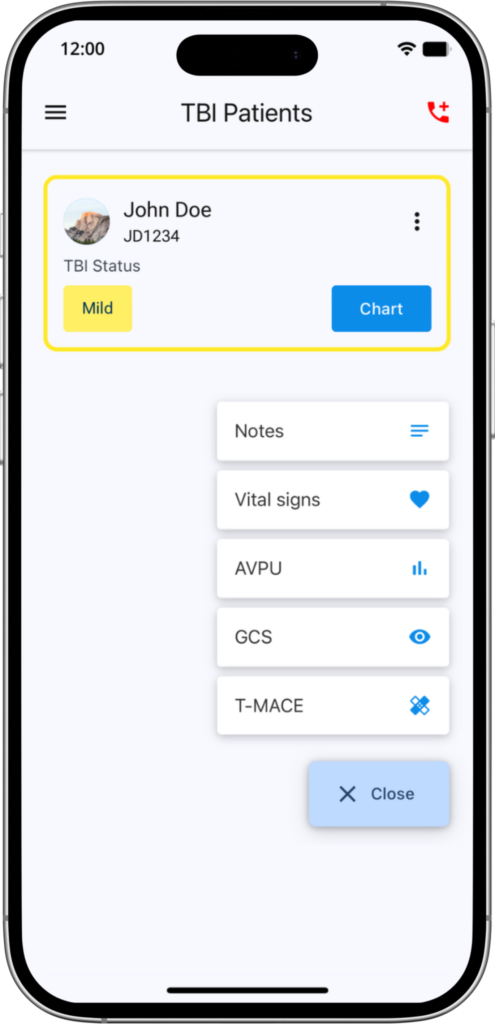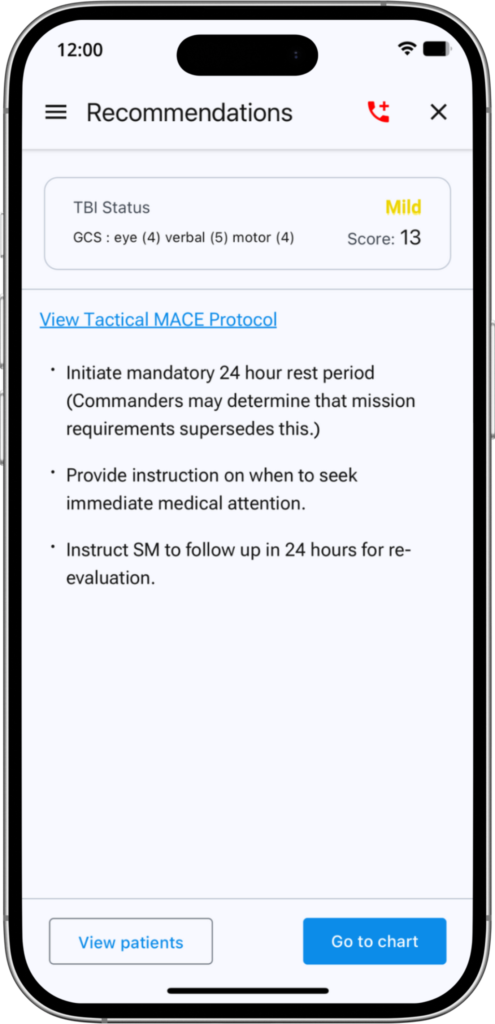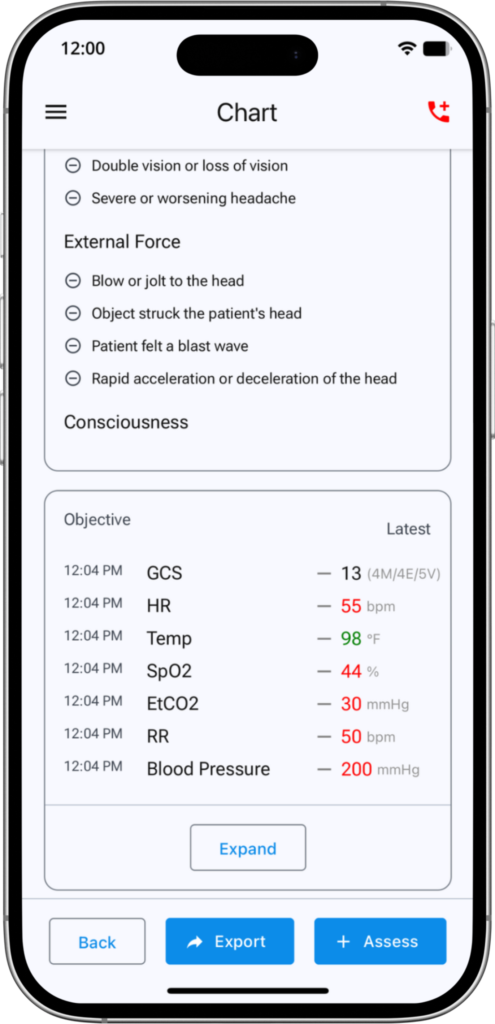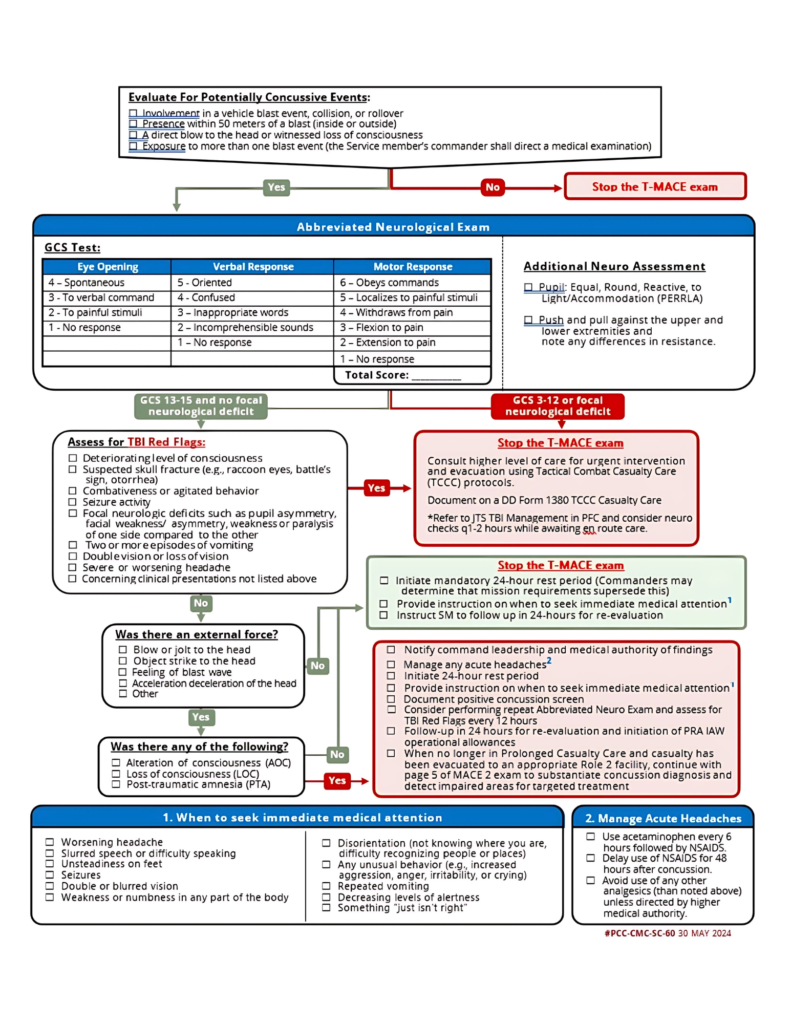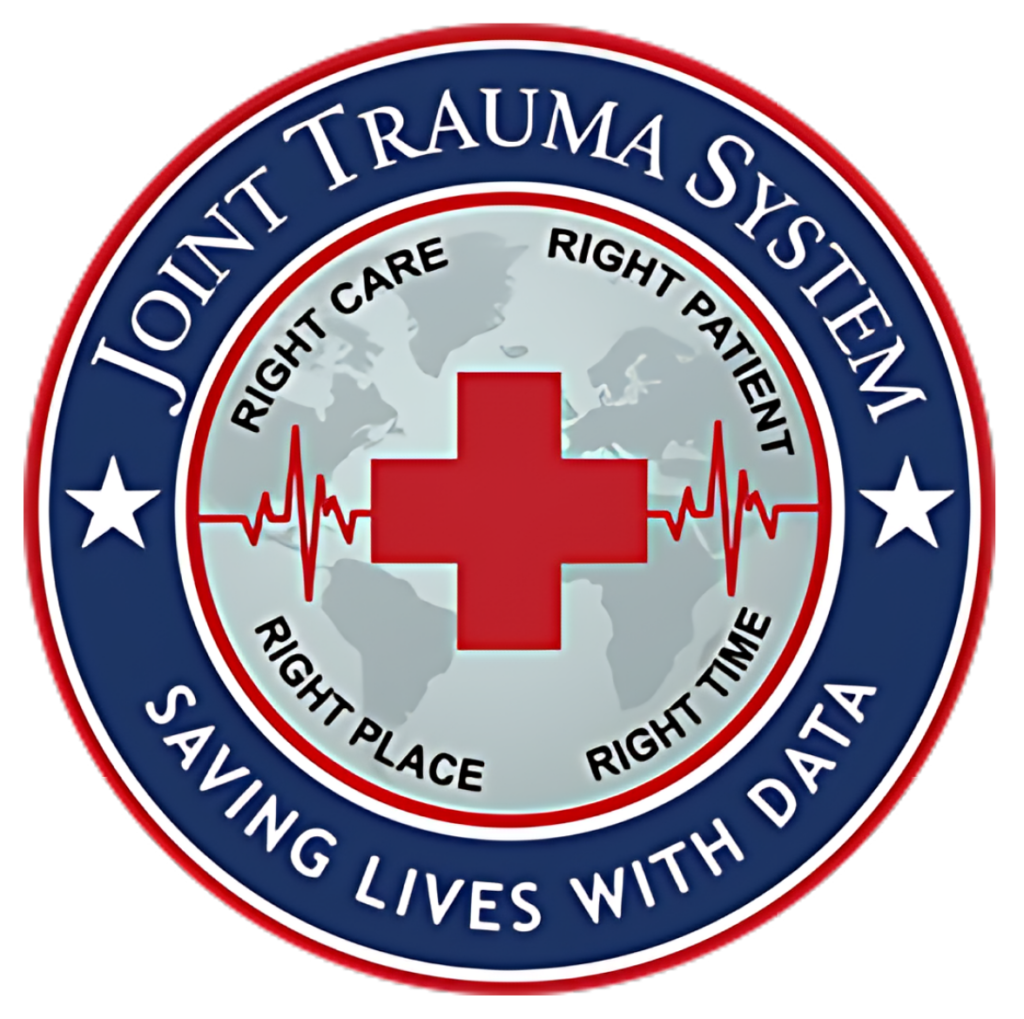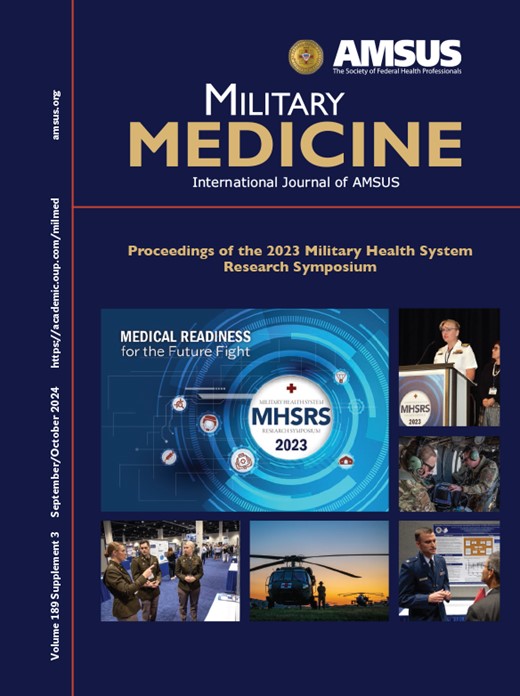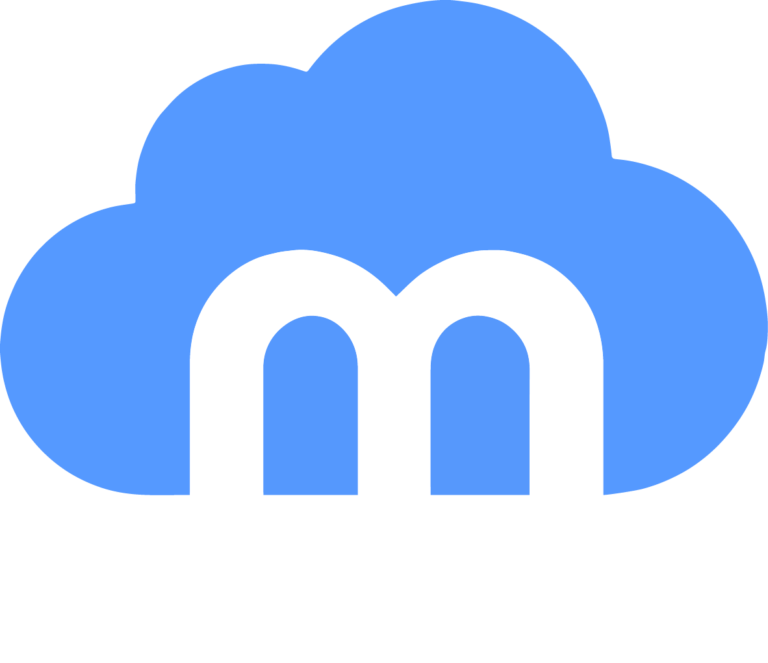GOVERNMENT PROJECTS
TBI NAVIGATORTM
TBI NAVIGATORTM
SEAMLESS TBI MANAGEMENT AT YOUR FINGERTIPS
THE PROBLEM
The Future of Large-Scale Combat
Significant changes in traumatic brain injury (TBI) management will be essential over the next few years to align with the future vision of combat casualty care. Future combat scenarios will present new and complex challenges, including:
Multi-Domain Operations
Combat will span across air, land, sea, and even space, demanding a more versatile approach to casualty care.
Rapid, Mobile Engagements
Operations will be swift and mobile, leaving little time to set up large, stationary field hospitals.
Delayed Evacuations
Evacuating wounded personnel to higher levels of care may be delayed, requiring immediate, on-site solutions.
Overwhelming Casualty Numbers
Large-scale combat operations will cause high volumes of casualties, adding immense strain on existing medical resources.
Current methods of triaging suspected TBI will not be able to keep pace with the demands of future conflicts. A new approach is needed.
THE VISION
Artificial Intelligence in Combat Casualty Care
Leverage AI to alleviate the cognitive load of decision-making and triage from warfighters. Reducing human task burden will allow for faster and better decision-making.
THE SOLUTION
The TBI NavigatorTM
A groundbreaking mobile app offering clinical decision support for the assessment and management of acute brain injury in prehospital and hospital settings.
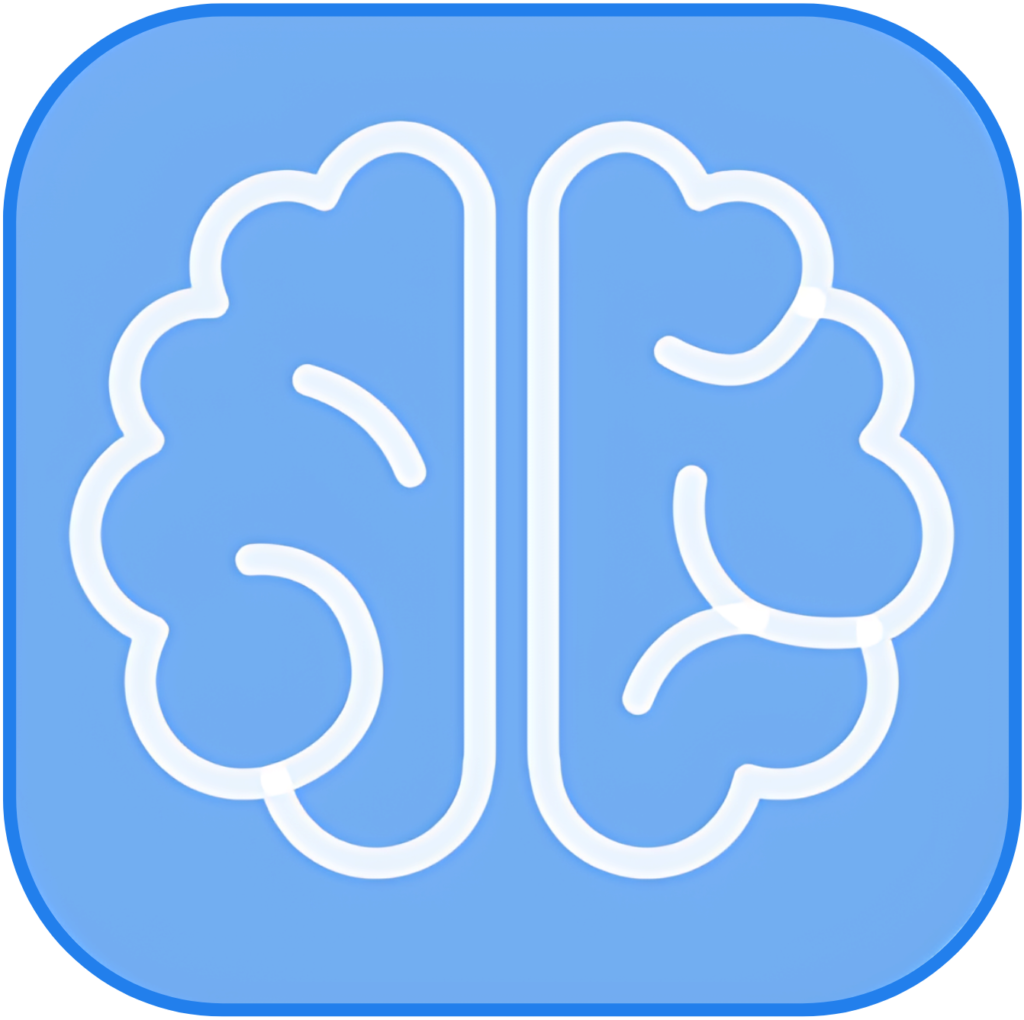
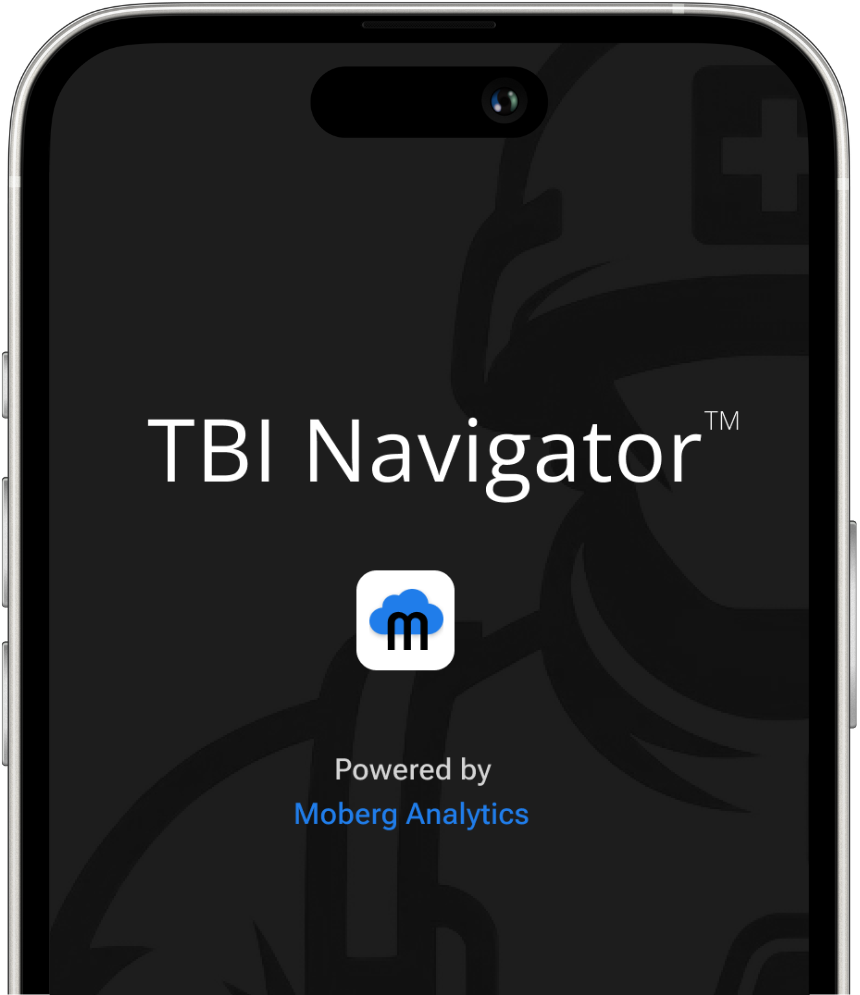
Developed to serve areas without direct access to immediate neurosurgical care:
Battlefield
Roles 1-4
Disaster
Medicine
Remote
Activities & Sports
Wilderness
Medicine
FEATURES
High-Level
Multi-Patient
Tracking
Monitor and manage many patients simultaneously, crucial in mass casualty or disaster scenarios.
Vital Signs &
Notetaking
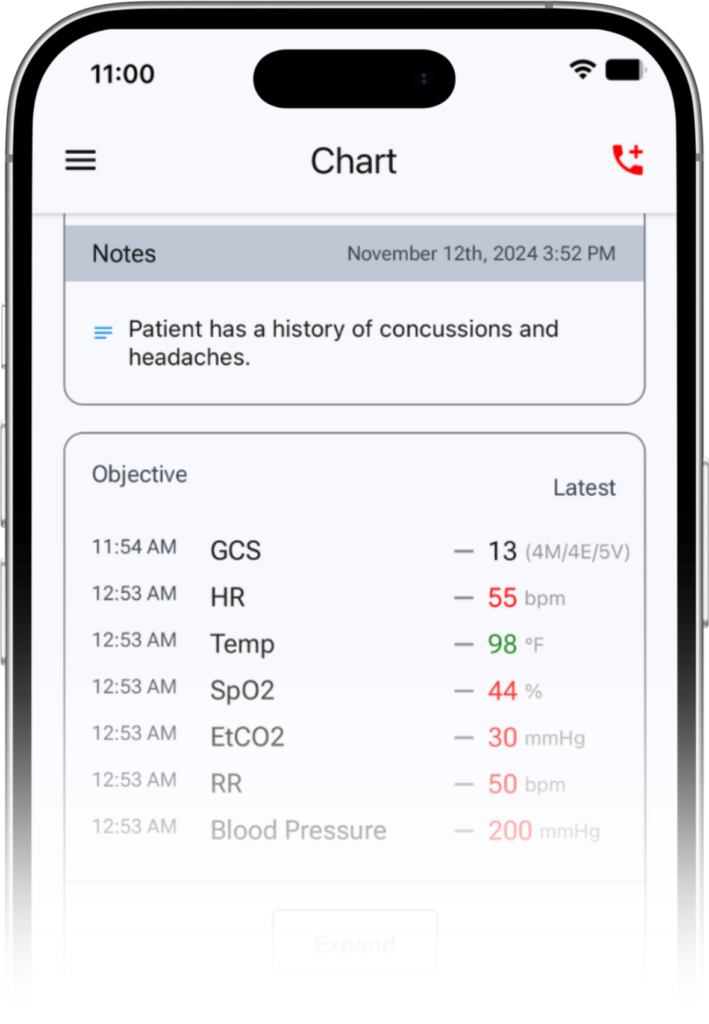
Enter vital signs manually and record patient notes either manually or through voice dictation.
Patient
Assessments
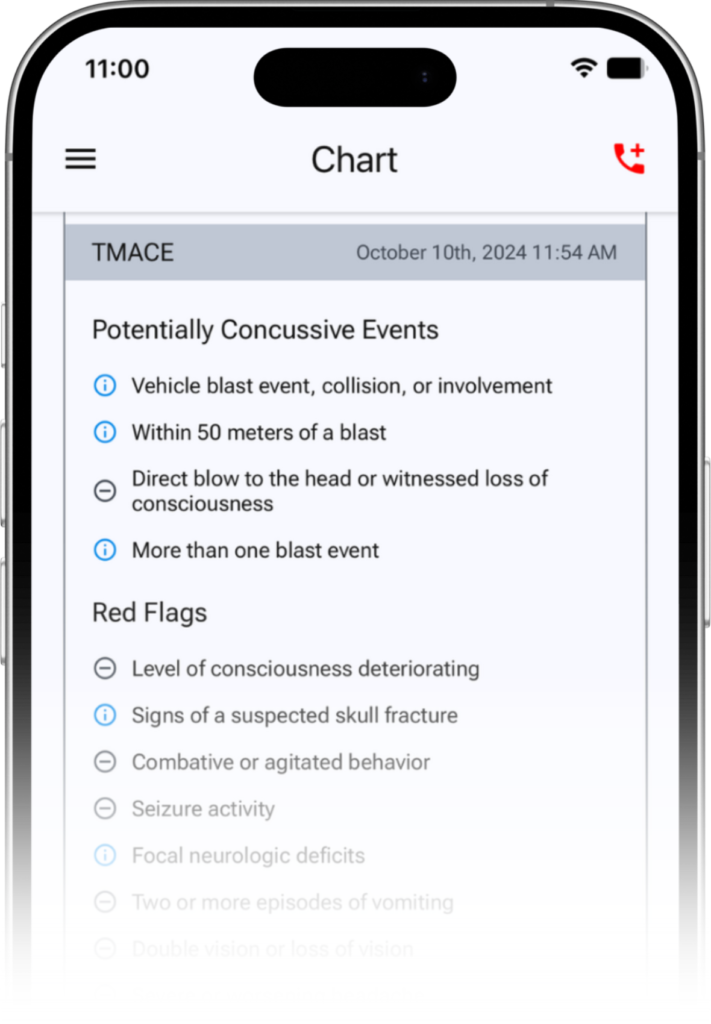
Use standardized assessments (GCS, AVPU Scale, T-MACE) to evaluate patients suspected of brain injury.
Clinical
Protocol Recs
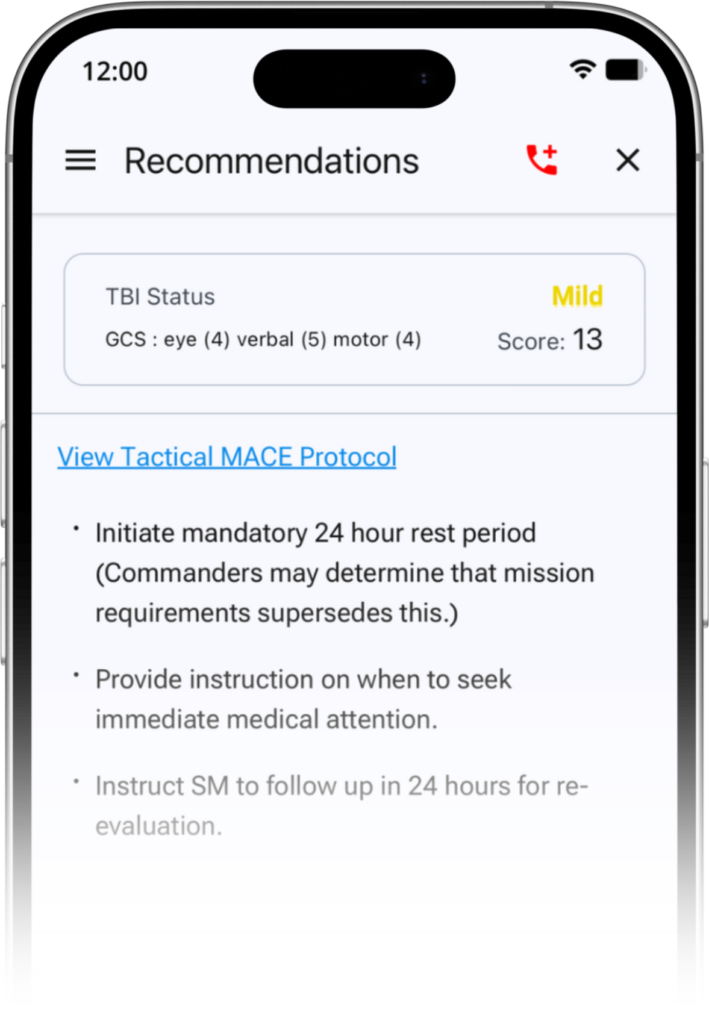
Receive action recommendations based on established clinical protocols to aid in patient care decisions.
Record
Compilation
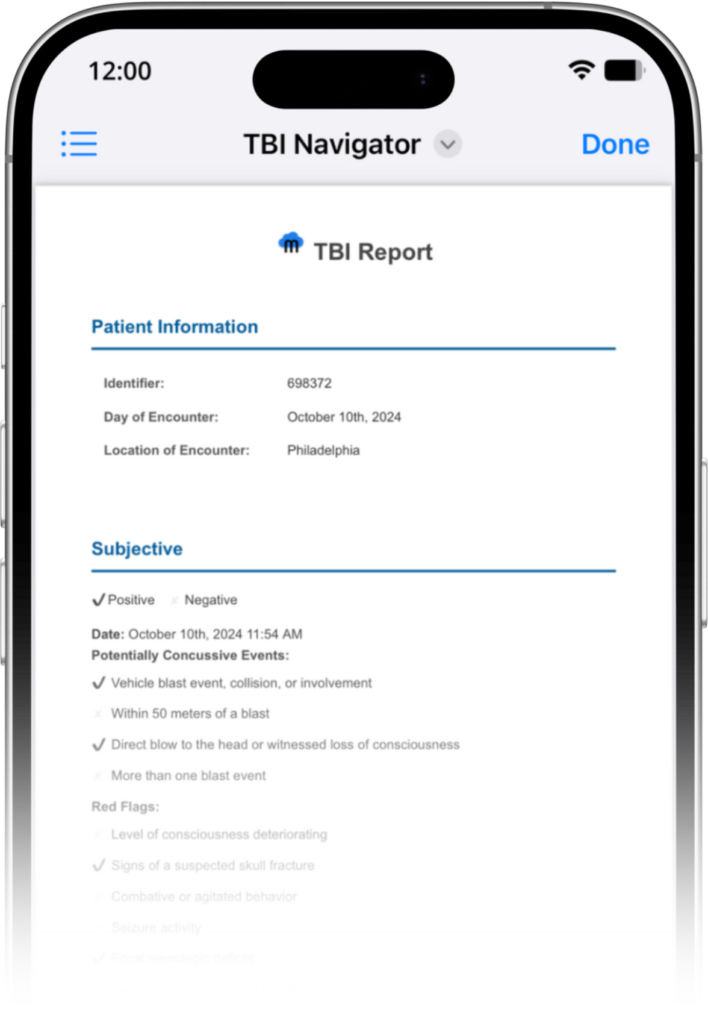
Create a comprehensive record of assessment results and vital signs, formatted according to the SOAP notes structure.
Communication
& Export
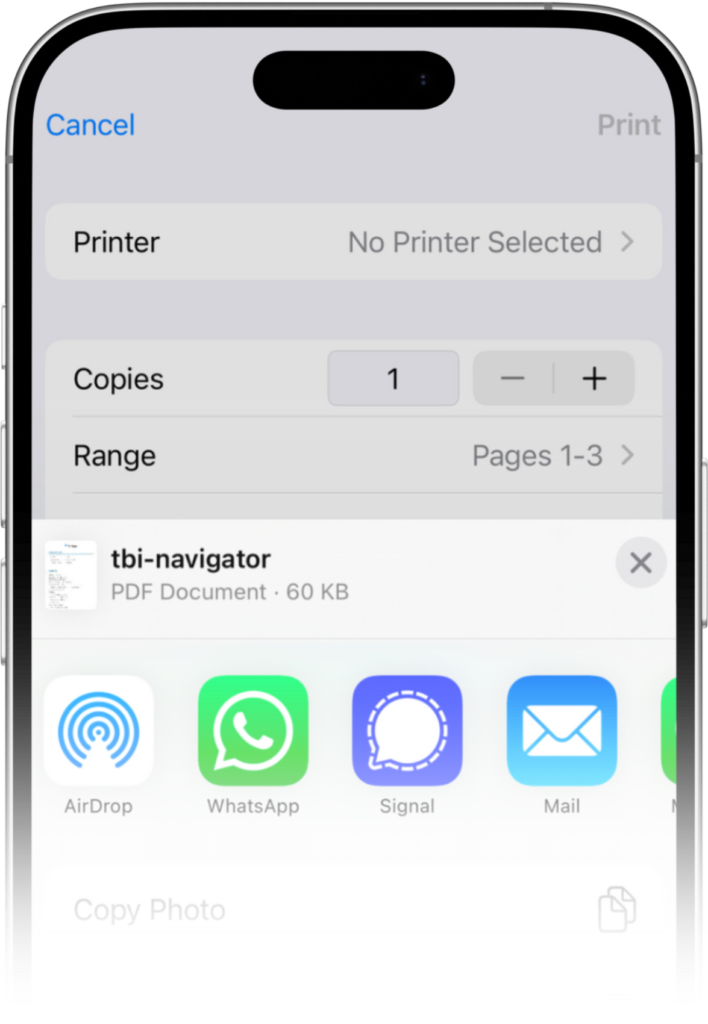
Export patient records for seamless information sharing with emergency personnel or via telemedicine.
Emergency
Contacts
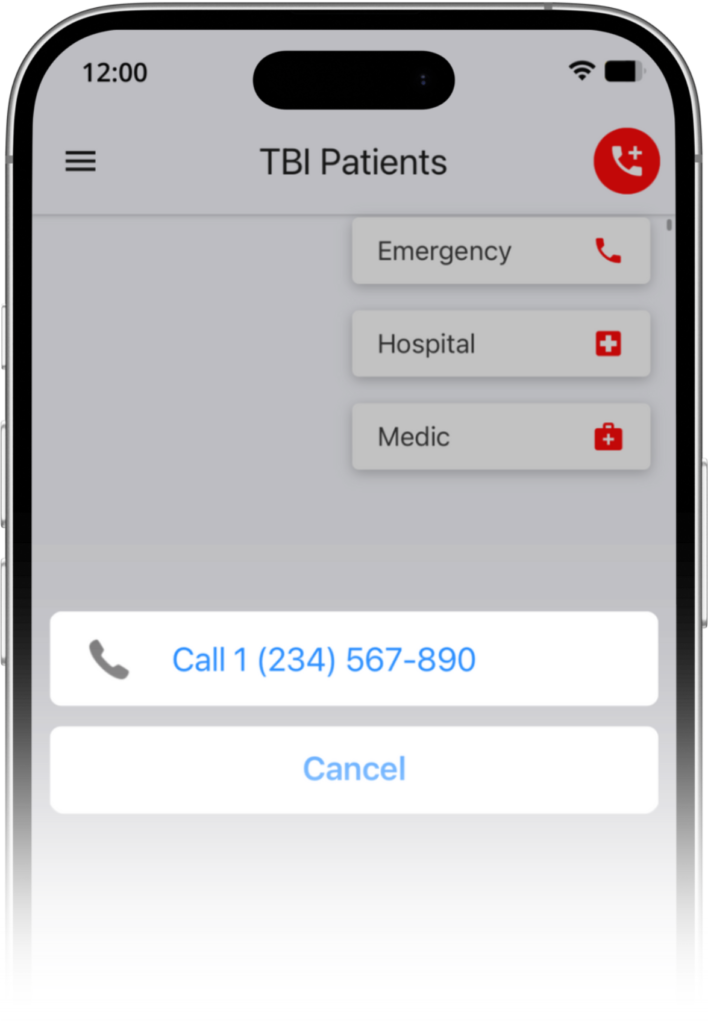
Store pre-programmed phone numbers for quick access to local emergency rooms, battalion chiefs, and other critical contacts.
FEATURES
Additional
Light & Dark Modes
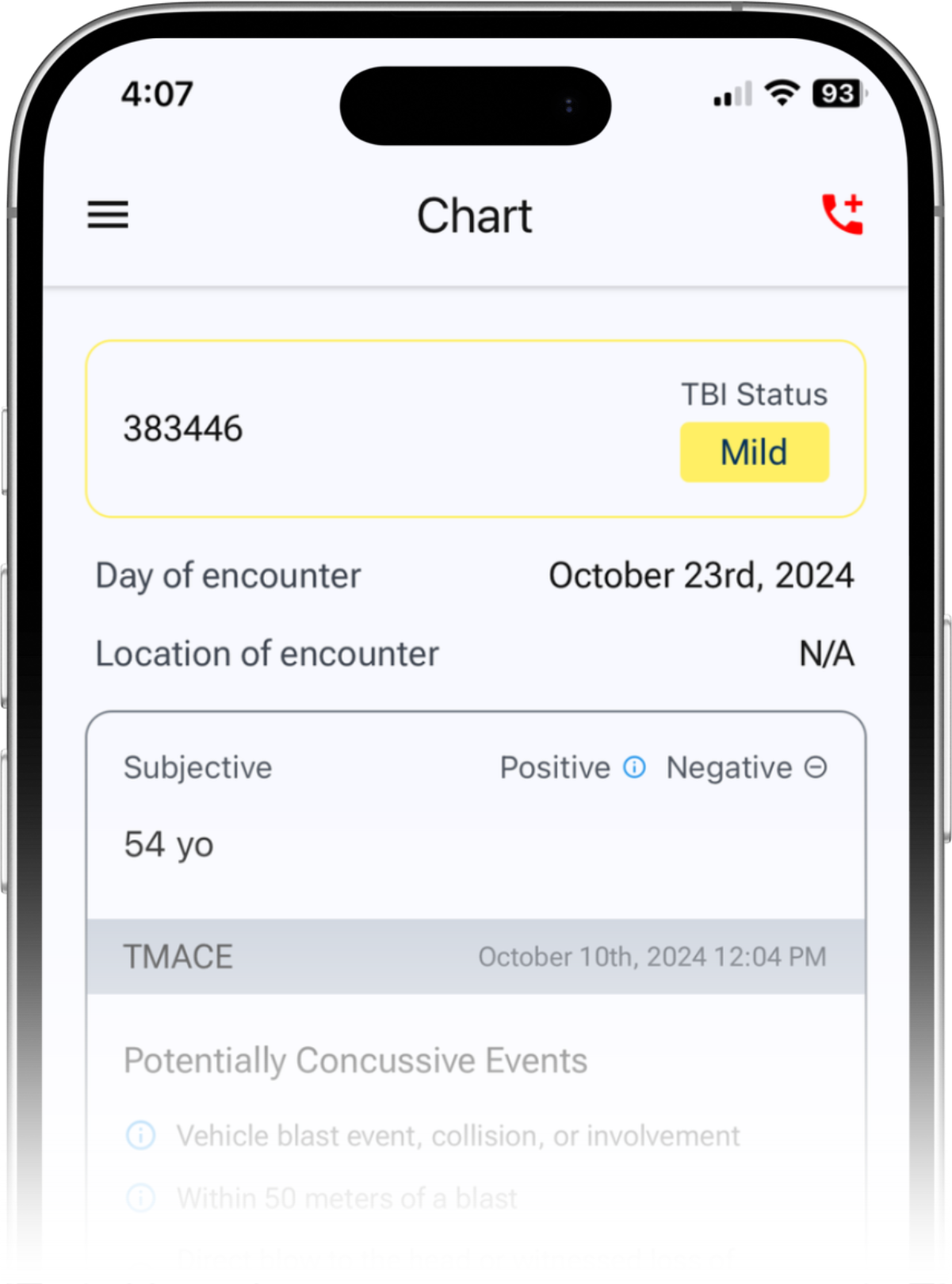
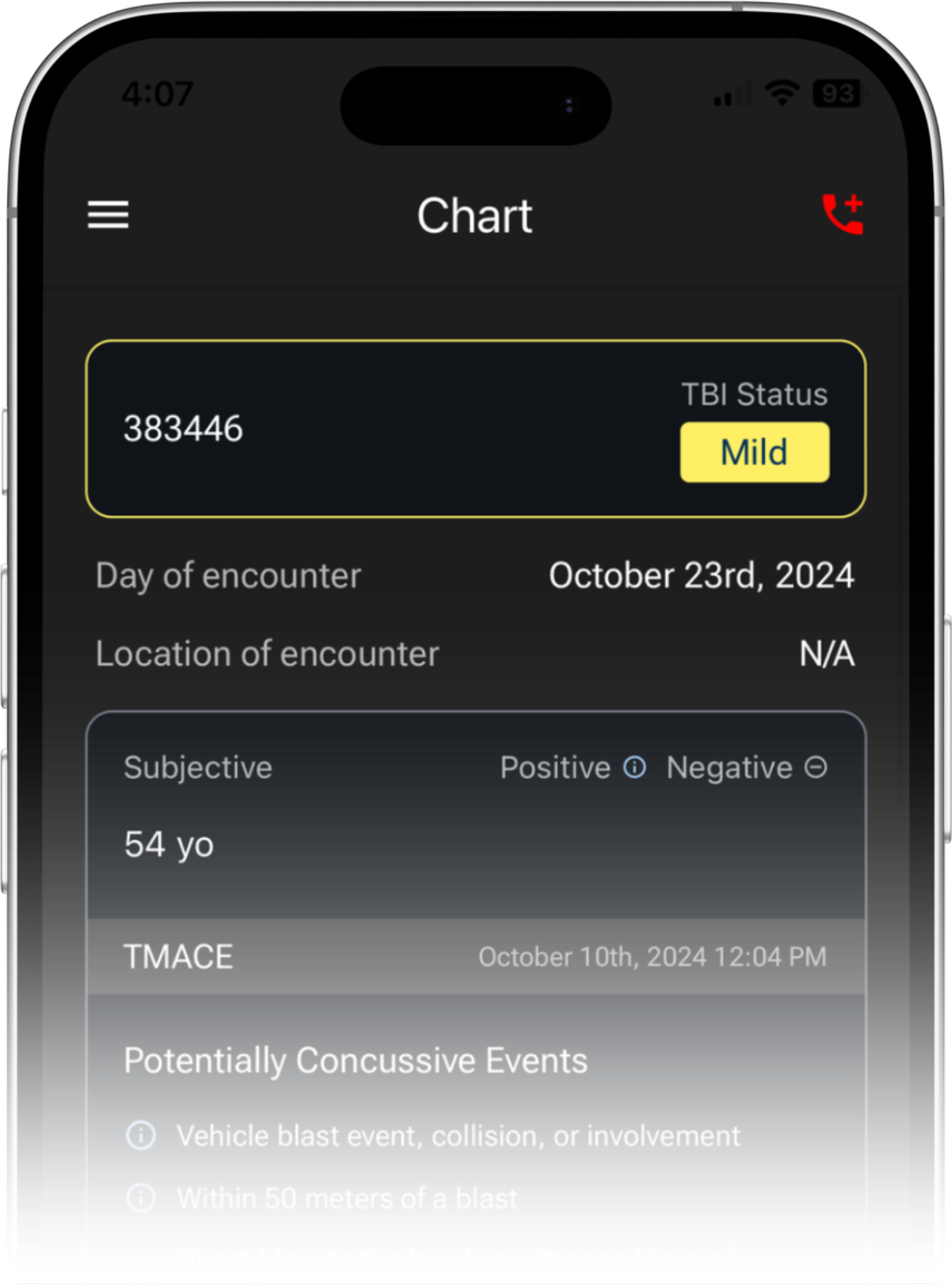
Adjust the app interface to light or dark mode
In-App Instructions
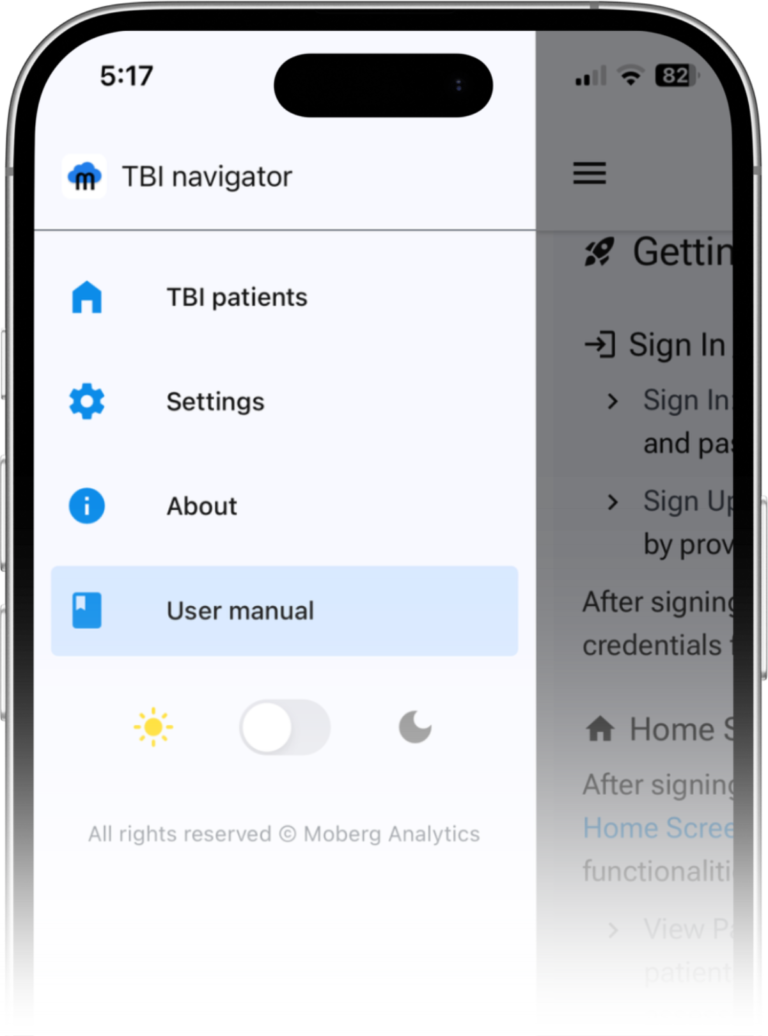
Refer to the app’s user manual for operating instructions
Secure Biometric Login
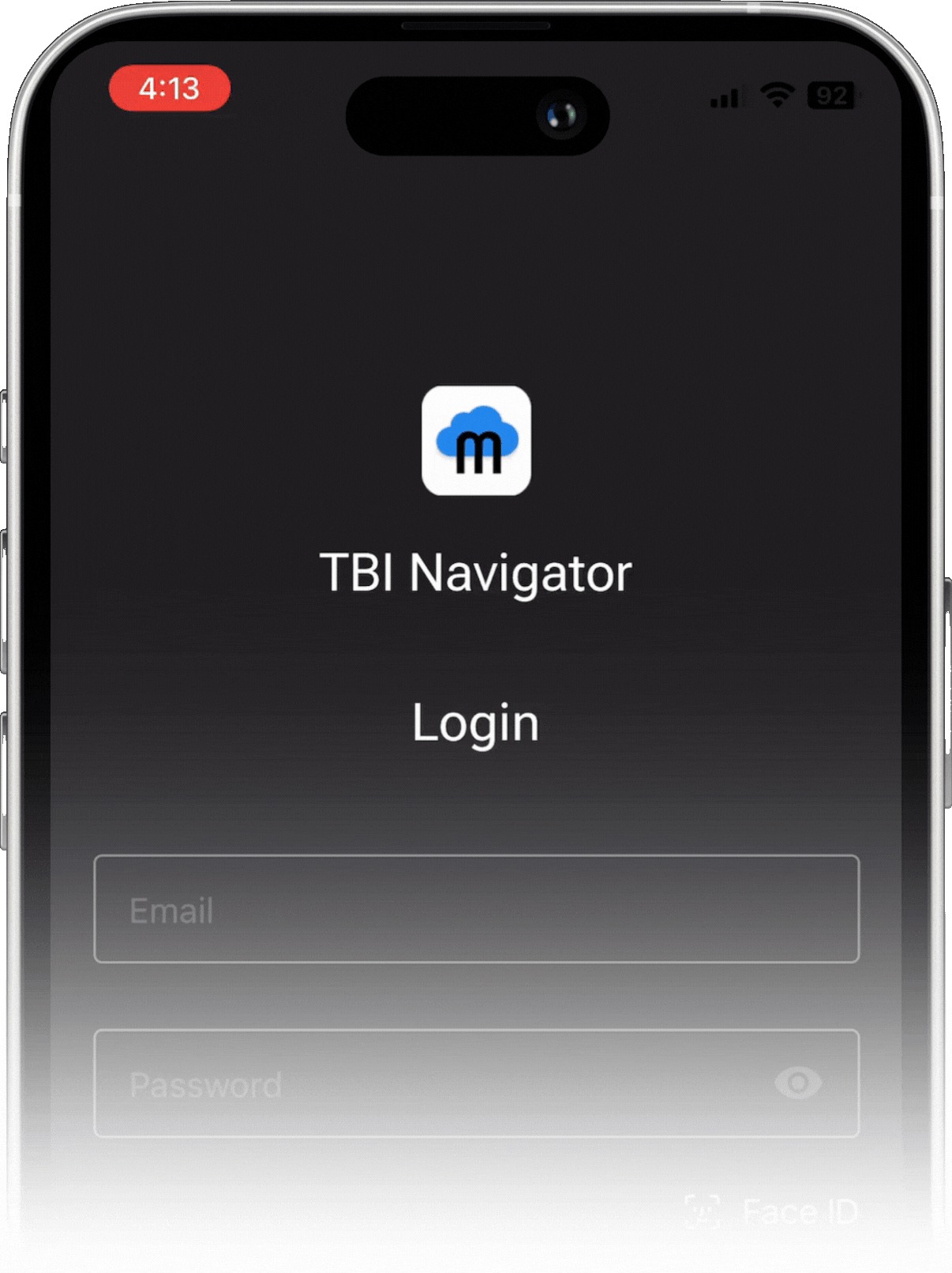
Enable Face ID for quick login to the app
Multi-Platform Support
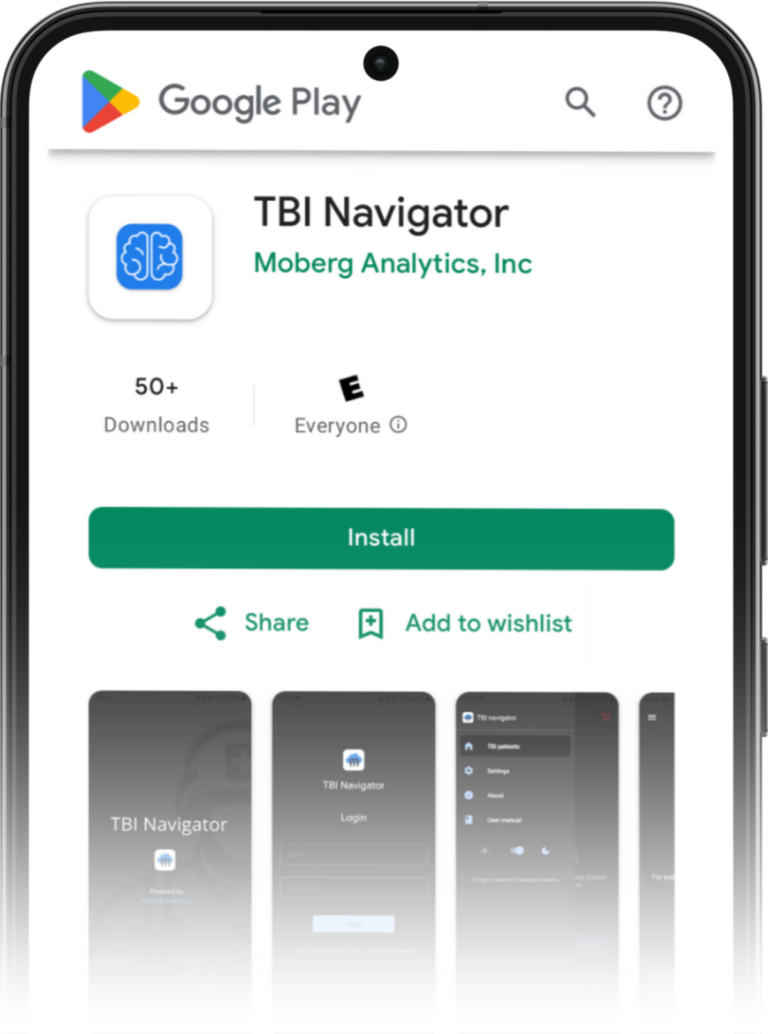
Download on both the Apple App Store and Google Play
THE TBI NAVIGATORTM IN ACTION
Video Walkthrough
TBI NAVIGATORTM
Guidance
Developed by experts in emergency medicine, medical technology, neurocritical care, wilderness medicine, brain monitoring technology, and special operations medicine, the app incorporates guidance from:
Tactical Military Acute Concussion Evaluation (T-MACE) by the Joint Trauma System, Defense Health Agency
Traumatic Brain Injury Management in Prolonged Field Care Clinical Practice Guideline (CPG ID: 63) by the Joint Trauma System
TBI NAVIGATORTM
Funding
The TBI NavigatorTM is funded through an on-going four year effort to bring multimodal monitoring and AI to the battlefield to enhance TBI management.1
The project has also received in-kind support from Moberg Analytics as well as collaborators:
1 This work was supported by the Assistant Secretary of Defense for Health Affairs, through the Defense Medical Research and Development Program / Joint Program Committee 6 / Combat Casualty Care Research Program / Precision Trauma Care Research Award under Other Transactions Number W81XWH-15-9-0001, award W81XWH-22-0-0006. The views and conclusions contained herein are those of the authors and should not be interpreted as necessarily representing the official policies or endorsements, either expressed or implied, of the U.S. Government.
RESOURCES
Learn More
Medical Disclaimer
The content provided by this application is intended for informational purposes only and is not a substitute for professional medical advice, diagnosis, or treatment. Always seek the advice of your physician or other qualified health providers with any questions you may have regarding a medical condition.
Assessment Limitations
This application is designed to assist in the assessment of TBI symptoms but does not replace. comprehensive medical evaluation. The results generated by this app should be used as a guide and not as a definitive diagnosis.
No Professional Relationship
Use of this app does not create a doctor-patient relationship. The information provided is general and should not be considered personal medical advice.
